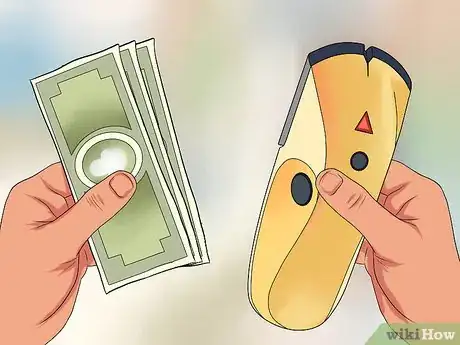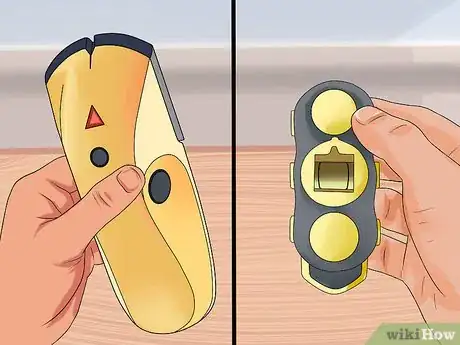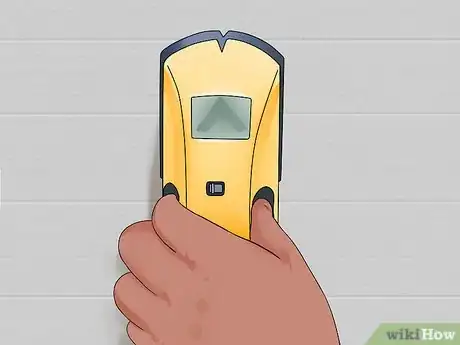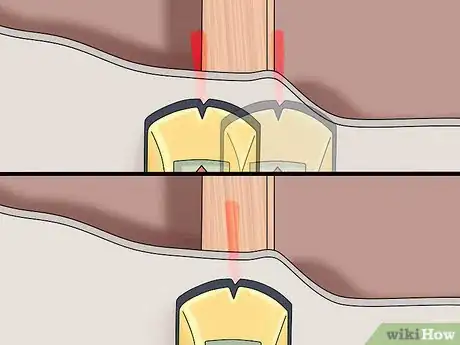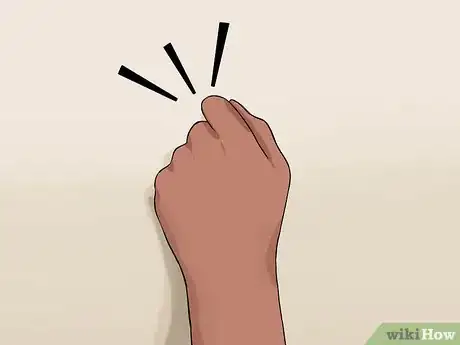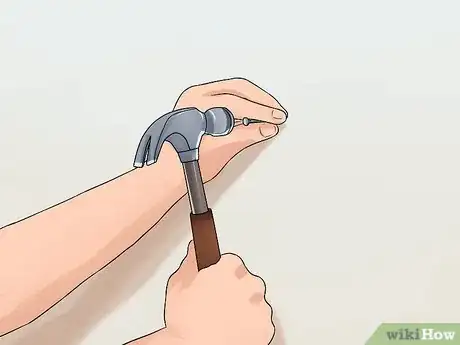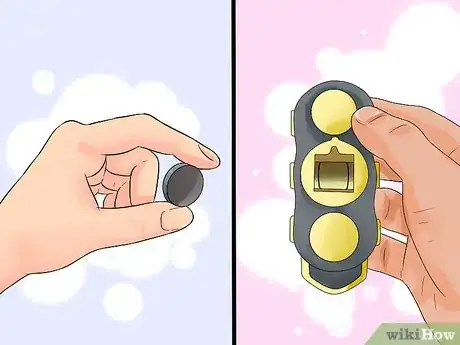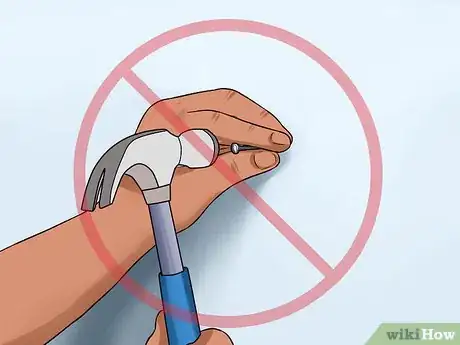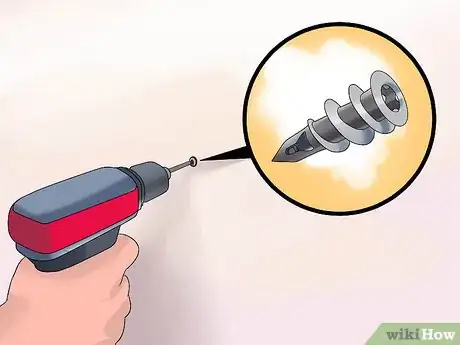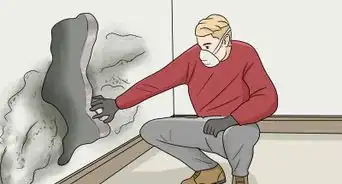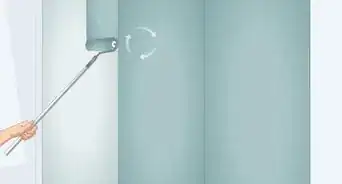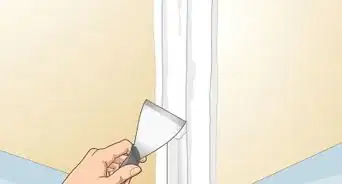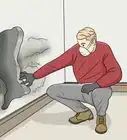This article was co-authored by Andrew Peters. Andrew Peters is an Architecture and Construction Specialist and a Principal at Peters Design-Build, a full service architecture and construction firm in the San Francisco Bay Area. With over 20 years of experience, Andrew specializes in sustainable and holistic design and building practices. Andrew holds a Bachelor of Architecture and a Project Management Professional (PMP) certification and is a Leadership in Energy and Environmental Design (LEED)-Accredited Professional. He served as Project Manager for the international-award-winning “Refract House,” Team California’s entry in the 2009 U.S. Department of Energy Solar Decathlon, a project featured in over 600 online and print articles.
There are 7 references cited in this article, which can be found at the bottom of the page.
wikiHow marks an article as reader-approved once it receives enough positive feedback. In this case, 83% of readers who voted found the article helpful, earning it our reader-approved status.
This article has been viewed 96,172 times.
When you are hanging pictures, shelving, or even a wall-sized flat screen television, you need to make sure you are hanging it securely and in the proper location. Unless you want to end up frustrated and have nail holes and screw marks all over your walls, locate a stud before you start hanging. Find a stud by using an electronic or magnetic stud finder, or by examining the wall and the surface to figure out where the studs are located.
Steps
Using a Stud Finder
-
1Invest in a tool that allows you to identify studs in your walls. These are often called stud finders or stud sensors. They can be purchased at hardware shops, home improvement retailers, or department stores, and they're usually pretty inexpensive.[1]
-
2Determine what kind of stud finder you have. Some stud finders are magnetic, so you will feel a pull when a stud is identified based on the presence of nails or wires running along the stud. Others measure changes in your wall width. These will signal the presence of a stud with a sound or flashing light.
- Magnetic stud finders can be less effective than other types of stud finders. This is because they do not discriminate between metals. A metal pipe that is nowhere near a stud will appear much the same to a magnetic stud finder as will a length of wire mounted on a stud.[2]
- Only use a stud finder that measures the changes in wall width if you have walls made of drywall. This is because drywall has a uniform width, which makes it easy for the stud finder. Plaster, on the other hand, often lacks uniform width, which can interfere with the stud finder.
Advertisement -
3Calibrate the stud finder if necessary. Some models will require you to calibrate them before use. You do this by placing the stud finder against a section of wall where there is no stud and turning it on. The calibration process will take differing lengths of time depending on the model. Some models may calibrate in a few seconds while others may need closer to one minute. Generally the stud finder will indicate once it has finished calibrating or if you need to repeat the process.[3]
- Stud finders that require calibration will generally have a method of alerting you if you have placed the finder over a stud or other material that may interfere with the calibration process, such as metal. Simply move the stud finder to a different location and try again.
-
4Pay attention to which model of stud finder you have. An edge-finding model will locate the edge of a stud. So if you have one of these, you will have to repeat the process from the other direction to find the other edge of the stud. You may also need to recalibrate the stud finder before making a second pass. A center-sensing model, on the other hand, will indicate where the center of the stud is.[4]
- If you have an edge-finding model, bear in mind that the width of studs can vary between 1.5 and 3.5 inches (3.8 and 8.9 cm) if your residence uses 2 in × 4 in (5.1 cm × 10.2 cm) lumber.[5] Other widths of lumber lead to different stud widths. Therefore, consider checking with a contractor or your landlord to determine how wide your studs are.
-
5Run the tool across the wall at the installation height for whatever you want to hang. Look for the indicator that tells you a stud has been located. Repeat this process several times at varying heights to confirm that you have found a stud.
- If you have the edge-finding model, mark where the beeping starts and stops to determine the width of the stud.
- Measure and mark 16 in (41 cm) increments across to find additional studs based on your baseboards. This is typical stud spacing. Older homes may have studs 24 inches (61 cm) apart. Use your stud finder to confirm that studs exist at these points.
-
6Find out if you have metal studs before drilling into them. Many apartment and office buildings use metal studs rather than wood ones. If this is the case for your residence or building, you'll need to use special fasteners. Most wood screws will not go through metal.[6]
- Use self-drilling sheet metal screws if you have metal studs. Or, drill a pilot hole, then use a drywall or wood screw that is just larger than the pilot hole.
Finding Studs in Drywall Without a Stud Finder
-
1Check the trim. Any kind of interior trim such as baseboard or crown molding is attached to studs. You can find where the studs are by looking for small dimples in the trim. These indentations are where the trim was nailed to the stud. The nail holes are filled with caulk and painted over after the trim is attached, but generally they remain visible if you look carefully enough.[7]
-
2Use a flashlight. Turn on a flashlight and set it on the floor so it shines up the wall. Look for little imperfections, like dimples, that run in a vertical line to identify the studs. This works best if your wall is smooth, rather than textured.
-
3Try the knock test. This requires you to knock lightly on the wall to see if you can hear whether a stud has been added. An area with no stud will produce a low, hollow sound. An area with a stud will produce a higher, more solid sound. Practice in areas where you know there are studs to train your ear.
-
4Drive a pin into the spot where you think the stud is located. If there is a stud there, the pin will stop when it makes contact with the wood. If there is no stud, you will encounter little resistance and the pin will go all the way into the wall.[8]
- If you don't find a stud the first time you use a pin, try the wire test. Fashion a coat hanger or other piece of long, thin, rigid wire into a right angle. Insert the wire into the hole you've made in the wall and spin it until it makes contact with a stud.[9] This way you won't have to knock multiple holes in your wall.
-
5Locate switches and outlets on your walls. Most electrical boxes will be mounted on the edge of a stud. Turn off the power to that switch or outlet and remove the cover. You should then be able to see which side of the switch the stud is located on by looking for the mounting screws. If you can't, use the knock or pin test to determine the placement of the stud.
- Measure at least 3⁄4 inch (1.9 cm) away from the outlet or the electrical unit to find the center of the stud. Try the knock or pin test if you want to figure out the stud's width. Remember that studs will normally be located at 16 in (41 cm) intervals on either side of the outlet/switch.
- Similarly, studs surround windows and doors.
-
6Calculate stud positions by measuring from corner to corner. Because studs tend to be 16 in (41 cm) apart, you can measure in from any corner to figure out where to find studs.
- Remember that not all walls are divisible by 16 in (41 cm) exactly, so there may be some studs that show up in a distance that is less than 16 in (41 cm) from the previous or next stud.
Finding Studs in a Plaster Wall
-
1Try a strong magnet or magnetic stud finder. An electronic stud finder that measures changes in the depth of the wall will not work on plaster. But a magnetic stud finder or particularly strong magnet can indicate where the wood lath has been nailed onto the stud.
- Similarly, you can use a metal-sensing stud finder to locate the nails that hold the lath onto the stud. Simply turn on the stud finder and run it both vertically and horizontally along the wall.
- A metal detector can also show you where the lath has been nailed to the stud.[10]
- If you use any of these methods remember to find multiple studs and measure the distance between them to make sure that you haven't found a metal pipe or wire that isn't attached to the stud.
-
2Try the knock test instead of the pin test. The knock test will still work for plaster. Knock on the wall to see if a stud is present. An area with no stud will produce a low, hollow sound, while an area with a stud will produce a higher, more solid sound.
- While you can find studs in drywall by driving a pin through the wall to see if it hits the stud, plaster is generally too tough for a pin to penetrate. A pin also won't go through the wood lath in any case.
- Using switches and outlets to find studs will also work. Any electrical switch or outlet will be mounted on a stud. Turn off the electricity to the switch or outlet and remove the plastic cover to see on which side of the stud the switch or outlet is mounted by looking for the screws.
-
3Use wood lath to hold lighter items. Hanging items on a plaster wall can be easier than hanging them on drywall because plaster is applied to an interior layer of wood lath. Lath is generally strong enough to handle any item weighing less than 10–15 pounds (4.5–6.8 kg). But for heavier items like television sets you'll still need to find at least one stud.[11]
-
4Hang heavy items using a wall anchor. You may not need to worry about studs if you use a strong enough wall anchor. Some wall anchors are strong enough to hold several hundred pounds, whether on drywall or plaster. Always remember to read instructions carefully before hanging anything on a wall anchor to avoid serious damage to your wall.[12]
Expert Q&A
Did you know you can get expert answers for this article?
Unlock expert answers by supporting wikiHow
-
QuestionHow can I locate a stud in my wall?
 Andrew PetersAndrew Peters is an Architecture and Construction Specialist and a Principal at Peters Design-Build, a full service architecture and construction firm in the San Francisco Bay Area. With over 20 years of experience, Andrew specializes in sustainable and holistic design and building practices. Andrew holds a Bachelor of Architecture and a Project Management Professional (PMP) certification and is a Leadership in Energy and Environmental Design (LEED)-Accredited Professional. He served as Project Manager for the international-award-winning “Refract House,” Team California’s entry in the 2009 U.S. Department of Energy Solar Decathlon, a project featured in over 600 online and print articles.
Andrew PetersAndrew Peters is an Architecture and Construction Specialist and a Principal at Peters Design-Build, a full service architecture and construction firm in the San Francisco Bay Area. With over 20 years of experience, Andrew specializes in sustainable and holistic design and building practices. Andrew holds a Bachelor of Architecture and a Project Management Professional (PMP) certification and is a Leadership in Energy and Environmental Design (LEED)-Accredited Professional. He served as Project Manager for the international-award-winning “Refract House,” Team California’s entry in the 2009 U.S. Department of Energy Solar Decathlon, a project featured in over 600 online and print articles.
Architecture & Construction Specialist
References
- ↑ Andrew Peters. Architecture & Construction Specialist. Expert Interview. 24 November 2020.
- ↑ http://www.digitaltrends.com/home/how-to-find-a-stud/
- ↑ http://www.lowes.com/projects/decorate-and-entertain/how-to-find-studs-in-walls/project
- ↑ http://www.lowes.com/projects/decorate-and-entertain/how-to-find-studs-in-walls/project
- ↑ http://www.bobvila.com/articles/how-to-find-a-wall-stud/#.V7xbLGUUVYY
- ↑ https://www.youtube.com/watch?v=1kgC7vfhnOE
- ↑ http://www.bobvila.com/articles/how-to-find-a-wall-stud/#.V7xbLGUUVYY
- ↑ http://www.lowes.com/projects/decorate-and-entertain/how-to-find-studs-in-walls/project
- ↑ http://www.digitaltrends.com/home/how-to-find-a-stud/
About This Article
To find a stud quickly and easily, kneel down and take a look at the trim of the room. Normally, trim is connected to the wall at points where there are studs, so look for small indentations in the trim. You can also try gently knocking on the wall to notice changes in the sound of the knock. In areas without a stud, the knock will produce a lower, hollow sound. In areas with a stud, the knock will be shorter and higher pitched. If you have trouble locating studs in the room, consider investing in a stud finder that measures the thickness of the wall to locate studs. If you want to learn how to find a stud in a plaster wall, keep reading the article!
